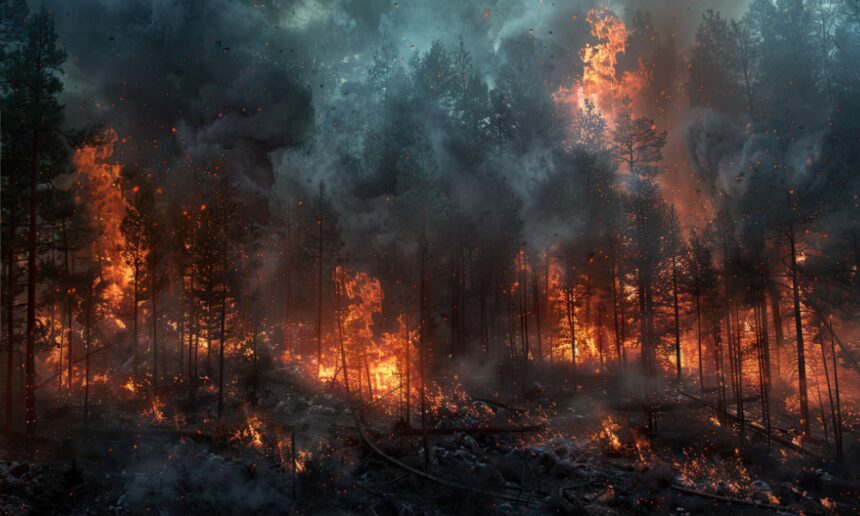The charred remains of Jasper National Park’s infrastructure tell only part of the story. Behind the blackened facades and smoke-damaged interiors lies a financial toll that continues to mount, with catastrophe modeling firm CatIQ now placing insured damages at a staggering $1.31 billion.
Walking through what remains of Jasper’s commercial district last week, I couldn’t help but notice the eerie quiet. Where tourists once crowded sidewalks with shopping bags and hiking gear, insurance adjusters now move methodically from building to building, clipboards and digital tablets in hand.
“We’re looking at the most significant wildfire loss in Alberta’s history,” explains Maria Rogers, senior risk analyst at the Insurance Bureau of Canada. “The combination of commercial structures, historic buildings, and the timing during peak tourist season created a perfect storm of conditions.”
The revised estimate represents a substantial jump from earlier projections and places the Jasper disaster among Canada’s costliest natural catastrophes. According to CatIQ data shared with Mediawall.news, approximately 30% of claimed losses stem from business interruption – a figure that continues to grow as Jasper’s economy remains effectively shuttered.
The human impact extends far beyond insurance claims. Nearly 25,000 residents and visitors were evacuated when flames approached the townsite in late July, and many businesses face uncertain futures despite having coverage.
Sarah Kennick, who owned a small art gallery near Connaught Drive for twelve years, told me her insurance will cover roughly 70% of her physical losses. “But how do you calculate fifteen years of building relationships with local artists? Or the summer revenue that typically carries us through winter?”
The disaster has sparked renewed criticism of wildfire management practices. Alberta’s Wildfire Management Branch had faced budget constraints in recent years, with a 9.4% reduction in prevention funding between 2019 and 2023, according to provincial budget documents.
Jasper Mayor Richard Ireland has called for a comprehensive review of emergency preparedness alongside immediate support for displaced residents. “We’re grateful for the response efforts, but we need to have difficult conversations about how we prepare for these events in a changing climate,” Ireland said during a community meeting held in Edmonton for displaced residents.
Federal Emergency Preparedness Minister Harjit Sajjan announced last week that additional recovery funding would flow through the Disaster Financial Assistance Arrangements program, though specific amounts remain unclear. “We recognize the profound impact this disaster has had on the community and the region’s economy,” Sajjan noted in a statement provided to media.
For insurance companies, the Jasper wildfire represents another in a series of catastrophic Canadian losses. The industry has paid out more than $4.7 billion in natural disaster claims annually over the past five years, according to Insurance Bureau of Canada statistics – more than double the average from the previous decade.
“We’re seeing a fundamental shift in how insurers view wildfire risk across Western Canada,” notes Dr. Jason Thistlethwaite, associate professor at the University of Waterloo’s School of Environment. “Premiums are likely to increase substantially in wildland-urban interface communities, and some properties may become effectively uninsurable without major mitigation efforts.”
The Jasper reconstruction will face additional challenges beyond insurance gaps. Supply chain issues continue to plague the construction industry, with materials costs running 18-23% higher than pre-pandemic levels. The remote location and specialized historic preservation requirements for certain structures will further complicate rebuilding efforts.
For residents like Mike Gervais, a local tour operator who lost both his home and business, the path forward remains uncertain. “The insurance process has been overwhelming – forms, documentation, proving what you owned,” he explains. “And then there’s the question of whether to rebuild in the same location knowing this could happen again.”
Climate researchers point to Jasper as a warning sign. Environment Canada data shows that average summer temperatures in the Canadian Rockies have increased 1.8°C since the 1950s, creating drier conditions and longer fire seasons.
“What we’re witnessing isn’t just bad luck,” says Dr. Ellen Whitman, forest fire research scientist with Natural Resources Canada. “These are the climate impacts that models have been projecting, arriving perhaps faster than expected.”
Provincial officials maintain that response efforts were appropriate given the extreme conditions. Alberta Forestry Minister Todd Loewen defended the province’s wildfire management approach, noting that crews had been battling the blaze for weeks before it reached the townsite. “Sometimes nature simply overwhelms even the best preparations,” Loewen stated during a press conference in Edmonton.
As autumn approaches, the immediate fire danger has subsided, but the recovery timeline stretches years into the future. Parks Canada has indicated that limited access to certain areas might resume by late fall, though the townsite itself remains largely off-limits.
The economic ripples extend throughout the region. Tourism operators in nearby communities like Hinton and Banff report mixed impacts – some suffering from regional tourism declines while others experience overflow from redirected Jasper visitors.
For Canada’s insurance industry, the disaster highlights growing sustainability challenges. “The question isn’t whether we can pay for Jasper,” says insurance analyst Rogers. “It’s whether the current model can absorb multiple Jaspers across the country as these events become more frequent.”
As cleanup operations continue, the full environmental impact remains unclear. Parks Canada ecologists are assessing watershed damage and wildlife impacts, with particular concern for aquatic ecosystems affected by ash runoff and fire retardant chemicals.
For now, Jasper’s community carries on – dispersed but determined. Weekly virtual town halls maintain connections between displaced residents, and several Edmonton businesses have offered temporary employment to Jasper workers.
Standing at the highway viewpoint overlooking the townsite, the iconic landscape appears dramatically altered. Yet amid the devastation, small signs of renewal have already emerged – the first green shoots pushing through blackened soil, nature’s reminder of resilience in the face of disaster. For Jasper’s people, that resilience will be tested through years of rebuilding that lie ahead.






